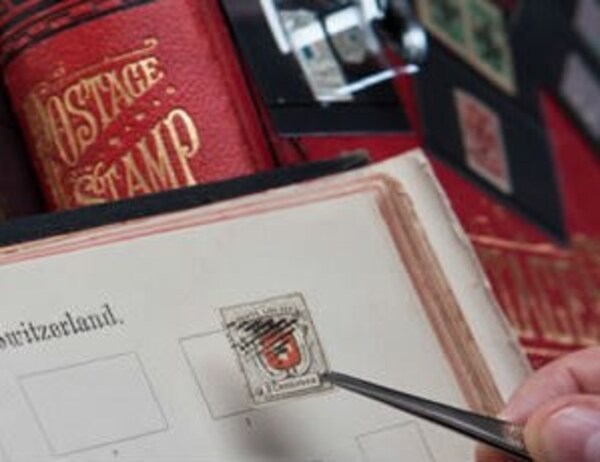The fascinating philatelic history of Macau began well before the first postage stamps were issued there in 1884. Non-adhesive cancelled covers were sent from Macau during the 19th Century. These rarely have identifiable postal markings though later ones, including those sent during the 1830s, have early Portuguese marks applied to mail that was carried on packet vessels operating between Macau and Lisbon. As trade and commerce developed private companies & vessels also delivered mail to mainland China and to Hong Kong, where a British Post Office had been established in November 1841. Hong Kong stamps from the second half of the century are often encountered with Macao postal markings British postage stamps and cancellations were used. Such ad hoc postal arrangements continued until the 1st March 1884 when the ‘Correrios de Macau’ (Chinese Post) took control of the postal services.
These ‘Crown Issue’ stamps were an iconic symbol of the Portuguese constitutional monarchy and the extent of its empire. The design incorporated nine different colours, with values between 5 and 300 Reis. They were printed at the Mint in Lisbon and are identical in most respects to other issues produced throughout the empire with common face values, currency and colours.
After 1884 the situation within Portugal deteriorated rapidly with domestic social instability and uncertainty surrounding the future of the monarchy created an interesting and changing philatelic landscape with many different issues, shortages, reprinting and the extensive use of surcharges until in 1888 a new series with the embossed profile of King Luis I was issued. In 1894 a change of currency to Avos and Rupees resulted in remaining Luis I stamps being surcharged in Avos and overprinted with the word “PROVISORO”. Later that year the new King Carlos definitive were issued. 1898 saw a Vasco Da Gama set of Commemoratives followed together with a new series of King Carlos I definitives.
Growing political and social unrest returned during the first part of the 20th Century and chaos followed the assassination of King Carlos I and his heir, the Prince Royal Luίs Felipe, in Lisbon on the 1st February 1908. The monarchy continued for a short time but eventually the young King Manuel II sought exile in England and a Republic was declared in early October 1910. The philatelic effect was perhaps as might be expected. The new government was overwhelmed by events. Remaining stocks of King Carlos I stamps were used overprinted with the word “República” and sent to Macau. There were significant shortages and local postal administrators used their innovative skills to satisfy demand. This included overprinting new values and bisecting stamps. A further change in currency occurred in 1913 when 100 Avos became equal to one Pataca.
It was planned that the “Ceres” series, issued in the same year, would bring stability and to an extent this proved to be the case. These bore the words “República Portuguesa” in a single box at the top and similarly “Macau” at the bottom. The 29 values and different colours, with a maximum denomination of 5 Patacas, continued to be issued in various formats through to the 1930s though again subject to overprints and currency surcharges. Other definitive stamps followed including the Vasco da Gama flagship “São Gabriel” typo-graphed issue of 1934. A reprinted lithograph issue of eight values followed in 1941 using a thinner paper with rougher perforations. There was a beautifully designed ‘Air’ issue in 1936. Macau, as a territory of Portugal, was included in the extensive range of values and highly regarded Empire issue of 1938.
Post war issues were many and varied covering a wide range of colourful and original designs that include many pictorial images of local scenery. This has continued to be the trend. When Macau received “special administrative region status” in 1999 following negotiations between Portugal and the Peoples Republic of China the inscription on stamps and the previous references to “República Portuguesa” were removed and replaced by “Macau, China”. The philatelic consequences of the political changes and Macau now being a part of China’s “one country, two systems” formula has been that the region now has more autonomy and is not as restrained as before. This has been confirmed by greater variety and a more imaginative policy of issuing stamps that depict local scenes and topography.
Macau, like Hong Kong, gradually developed to become a successful commercial and strategically important centre. Since the early years of the 16th Century when Portuguese ships first reached the coast of the Pearl River where trading missions were established there has always been a need to communicate. Portugal eventually succeeded in establishing a workable, relatively stable and long term relationship with successive dynasties and more recently with the Peoples Republic of China itself. The postal system developed locally but the philatelic history and significant range and different types of postage stamps that were issued and the reasons why they became necessary can be traced to the internal changes that occurred in Portugal itself as an inaugural and distant colonial postal service sought to establish itself.


 General
General
 General
General
 General
General